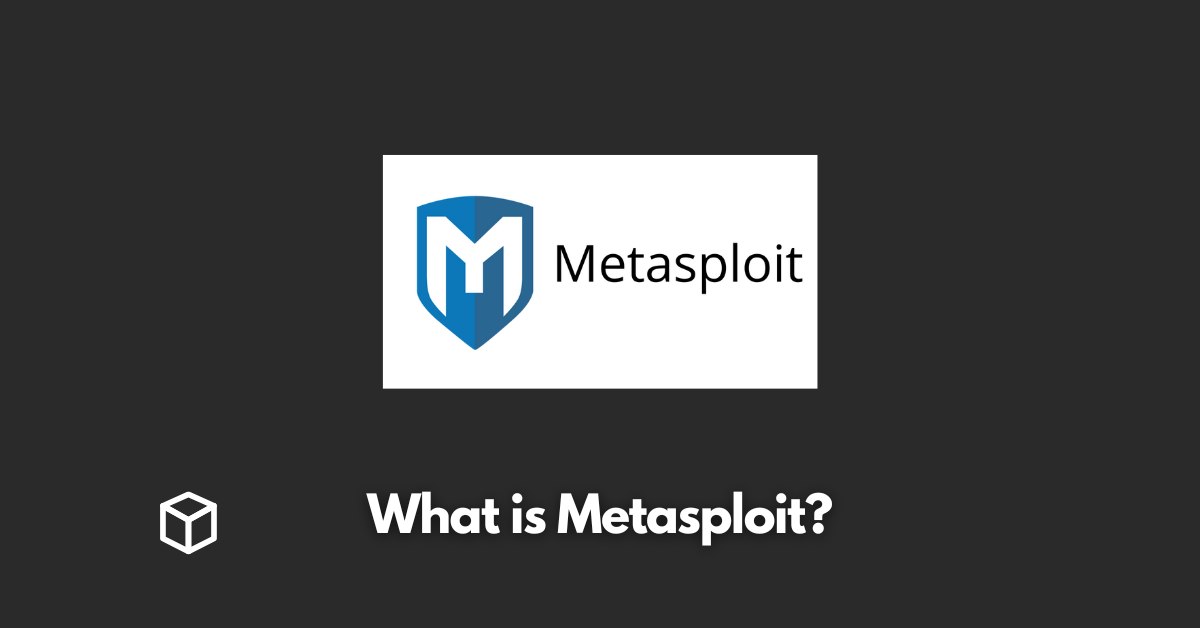Metasploit is a powerful open-source tool that is widely used in the field of information security.
It is a framework that is specifically designed for penetration testing and exploit development.
In simple terms, Metasploit allows security professionals to identify vulnerabilities in a computer system or network, and then exploit those vulnerabilities to gain unauthorized access.
In this article, we will take a closer look at Metasploit, its history, how it works, and its many uses.
History of Metasploit
Metasploit was first developed in 2003 by HD Moore, who wanted to create a tool that would make it easy for security professionals to identify and exploit vulnerabilities in a system.
Over the years, Metasploit has undergone many changes and improvements.
It has grown from a simple exploit development tool to a comprehensive framework that includes various components such as exploit modules, payloads, and auxiliary modules.
Today, Metasploit is widely recognized as one of the most powerful and versatile tools in the field of information security.
How Metasploit Works
At its core, Metasploit is a framework that consists of various components that work together to make penetration testing easier.
The main components of Metasploit are the framework, exploit modules, payloads, and auxiliary modules.
The framework is the backbone of Metasploit and provides the basic functionality that is required to run the tool.
Exploit modules are used to identify vulnerabilities in a system, while payloads are used to exploit those vulnerabilities.
Auxiliary modules are used for tasks such as reconnaissance and post-exploitation.
To understand how Metasploit works, let’s take a look at an example of how it can be used to identify and exploit a vulnerability.
Let’s say that a security professional wants to identify a vulnerability in a web server that is running on a Windows operating system.
The first step would be to use the framework to search for an exploit module that is specific to the Windows operating system.
Once the exploit module has been identified, the next step would be to use it to identify a vulnerability in the web server.
Once the vulnerability has been identified, a payload can be used to exploit the vulnerability and gain unauthorized access to the web server.
Common Uses of Metasploit
Metasploit is a versatile tool that has many uses in the field of information security.
Some of the most common uses of Metasploit include vulnerability scanning, exploitation, and post-exploitation.
Vulnerability scanning is the process of identifying vulnerabilities in a system or network. Metasploit can be used to automate this process, making it much easier for security professionals to identify vulnerabilities.
Once vulnerabilities have been identified, Metasploit can be used to exploit them and gain unauthorized access to a system or network.
Post-exploitation is the process of gathering information and maintaining access to a system or network after a successful exploit. Metasploit can be used for this purpose as well.
Setting up Metasploit
Setting up Metasploit is relatively simple and can be done on both Windows and Linux operating systems.
The first step is to download the Metasploit framework from the official website. Once the download is complete, the framework can be installed on the system.
The next step is to configure the tool, which involves setting up the database, creating a user account, and configuring the network settings.
Detailed instructions on how to set up Metasploit can be found in the official documentation.
Metasploit in Action
Metasploit has been used in many real-world scenarios to identify and exploit vulnerabilities in different types of systems.
For example, Metasploit was used in 2011 to exploit a vulnerability in the Adobe Reader software, which allowed attackers to gain unauthorized access to the victim’s computer.
In another example, Metasploit was used in 2013 to exploit a vulnerability in Microsoft Windows, which allowed attackers to gain complete control of the victim’s computer.
These examples demonstrate the power and effectiveness of Metasploit in identifying and exploiting vulnerabilities in real-world systems.
Conclusion
Metasploit is a powerful and versatile tool that is widely used in the field of information security.
It is a framework that consists of various components that work together to make penetration testing easier.
Metasploit can be used for vulnerability scanning, exploitation, and post-exploitation, and can be installed on both Windows and Linux operating systems.
It’s a must-have tool for any security professional or penetration tester, and its use in real-world scenarios have demonstrated its effectiveness.
Resources
To learn more about Metasploit, there are many resources available, including tutorials, forums, and official documentation.
Some popular resources include the Metasploit Unleashed website, the Metasploit documentation page, and the Metasploit forum.
With these resources, you can deepen your understanding of Metasploit and become proficient in using it for penetration testing and exploit development.




